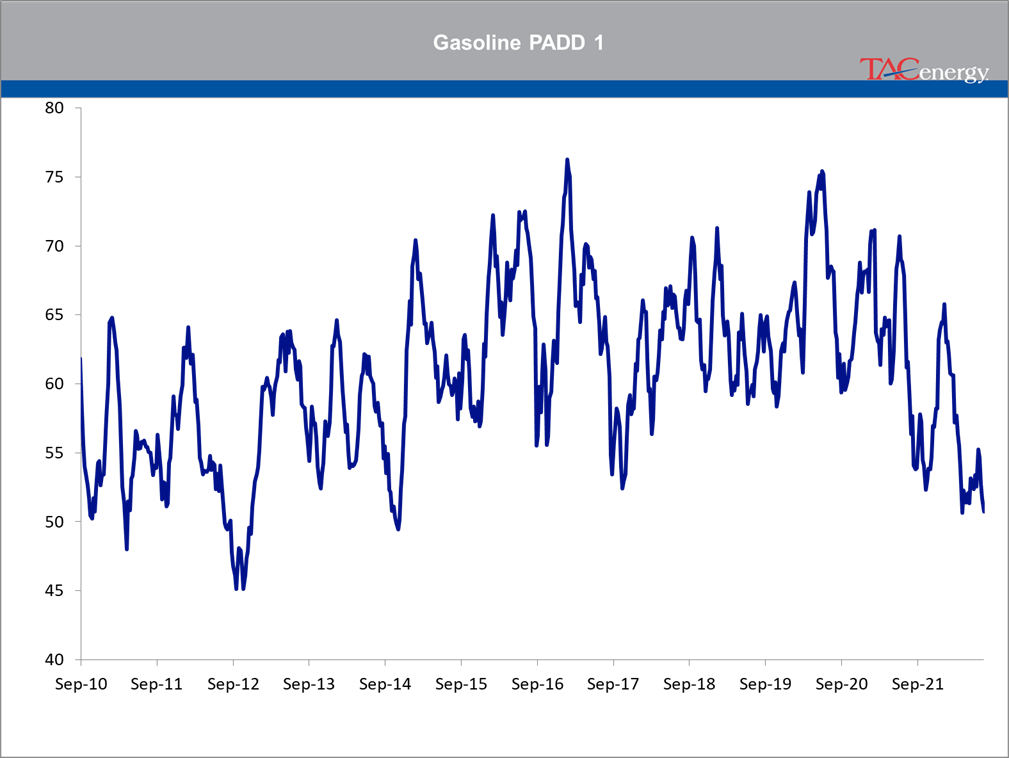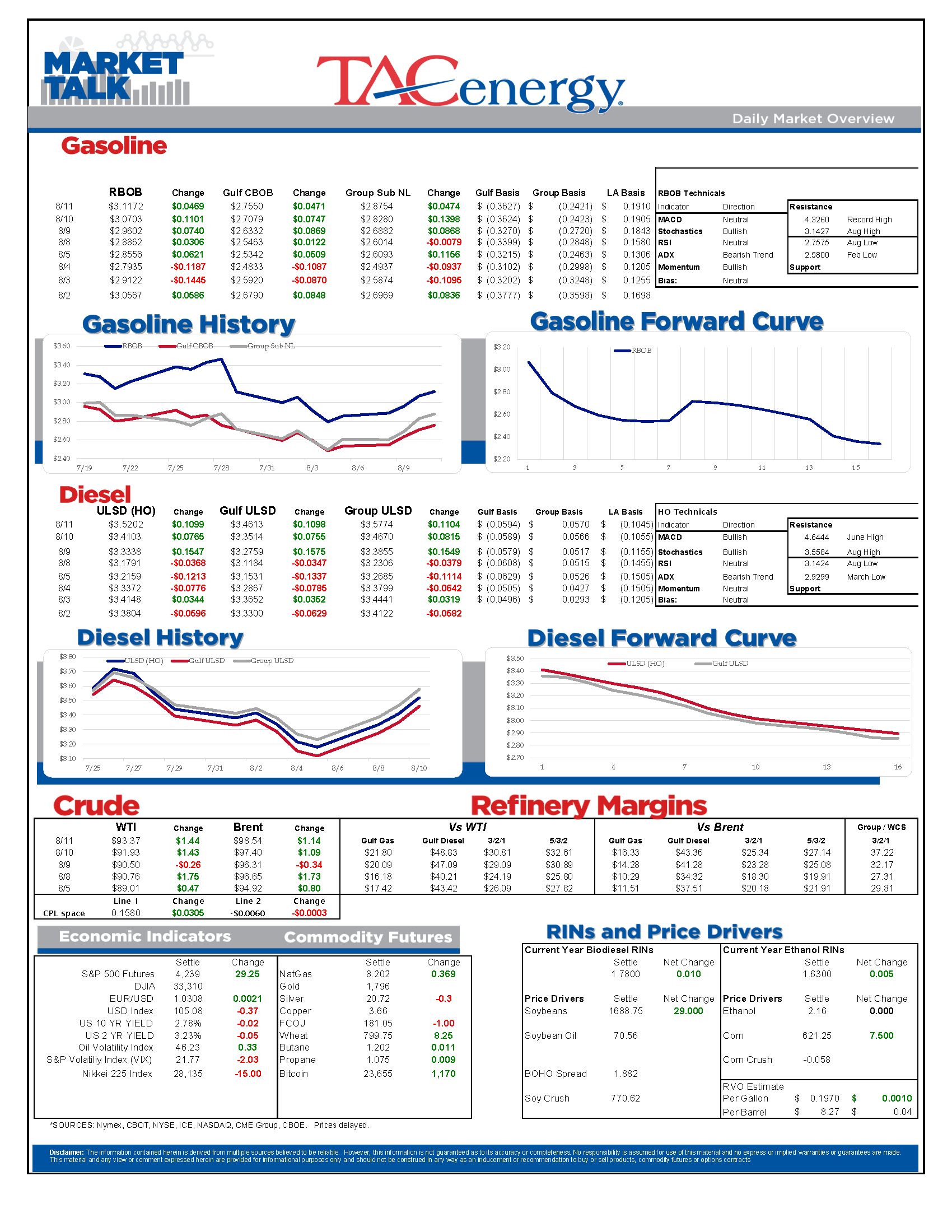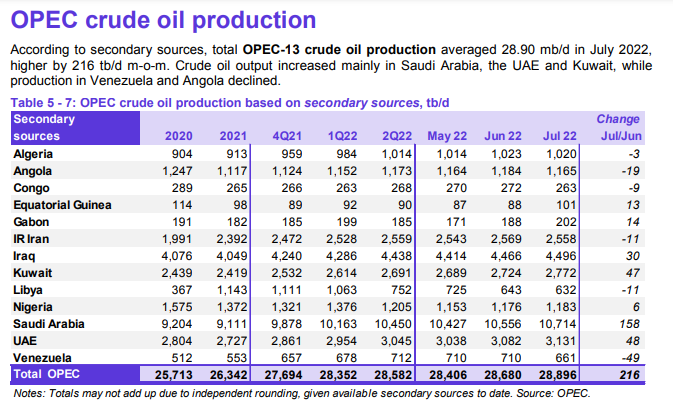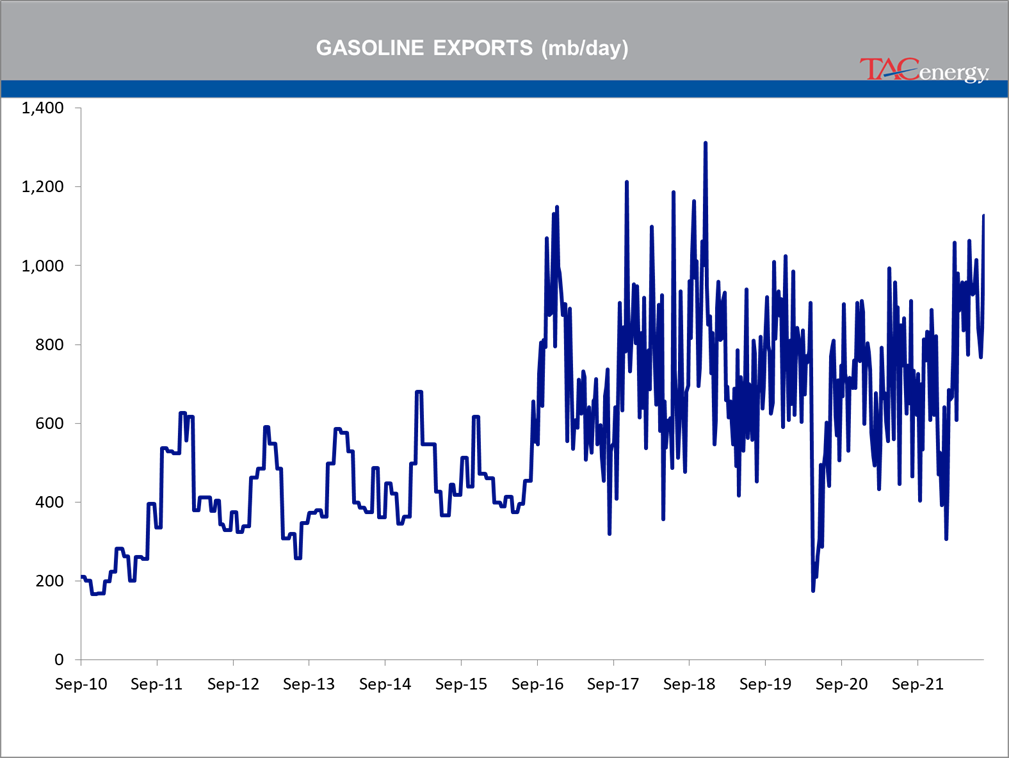Energy And Equity Markets Are Celebrating Signs Of Slowing Inflation With A Big Price Rally

Energy and equity markets are celebrating signs of slowing inflation with a big price rally, which in the case of refined products, will likely end the streak of declining retail prices, aka start increasing inflation again. Refined products are making a strong case that the summer price floor is in, with RBOB futures up 37 cents since Friday’s lows, and ULSD futures up 34 cents since bottoming out Monday. Now that we have at least a temporary floor in prices the question becomes whether the bulls will make another run, or if we’ll be stuck in a sideways price purgatory pattern for the coming weeks?
For RBOB , the next test looks to be the August high at $3.14, and if that breaks, a run to $3.36 looks likely as trading programs will look to fill the chart gap left behind by the ridiculously severe backwardation from the August to September contracts. Speaking of which, this rally may well be the last big move for RBOB prices of the year (unless there’s a hurricane) as we will transition to winter grade specs in just over a month.
For ULSD, the low $3.50s mark a good short term pivot point, and have already repelled one rally attempt overnight. If buyers can breach that level, a run back to $3.80 looks likely before month end.
Yesterday’s DOE status report showed that import/export flows continue to have major influences on US fuel stockpiles. Gasoline exports surged to their highest level since 2018 last week, and gasoline imports declined again, pushing total gasoline stocks sharply lower on the week, and stocks along the East Coast (PADD 1) to an 8 year low. Those extremely low inventory levels have helped push NY Harbor gasoline basis levels back to 50 cent premiums over their USGC counterparts, and sent the price for leasing space on Colonial to a new 8 year high.
Diesel and crude oil inventories meanwhile both saw healthy builds as exports slowed last week from the record setting pace we’ve seen earlier in the summer. Don’t expect that trend to last, particularly for distillates, as we head into the busier demand times of the year with the fall harvest and winter heating seasons.
Gasoline saw a strong recovery in its weekly demand estimate, after last week showed figures lower than the COVID summer of 2020, but US consumption remains below last year’s levels and the 5-year seasonal average. Refinery runs did increase in all 5 PADDs, with the East Coast seeing the highest run rates since the PES refinery blew up in 2019 after PBF restarted a unit at its Paulsboro NJ facility that had been shut down due to weak economics following the pandemic.
OPEC revised its global economic and oil demand outlooks in its monthly report released this morning, citing the slowdown in Q2 GDP that we won’t call a recession. The report held supply forecasts steady, and noted that a lack of liquidity in energy commodities is adding to the price volatility we’re experiencing. The cartel’s output increased by 216mb/day in July, led by increases in Saudi Arabia, UAE and Kuwait, which were partially offset by declines in Venezuela, Libya and Iran.
A new $5.5 billion greenfield refinery project is being proposed in Texas, which would be the first new large refinery built in the US in nearly 50 years should it move beyond a pipe dream. The pitchers of the plan claim the new facility would reduce carbon emissions by 95% compared to traditional refineries, and would begin operations as soon as 2025 IF the project can clear the same major financing and permitting hurdles that have doomed every other new refinery project proposed in the past half century.
News & Views
View All
Energy Futures Are Caught Up In Headline Tug-O-War This Morning
Energy futures are caught up in headline tug-o-war this morning with Canadian oil production concerns and a positive US GDP report trying to push prices higher while sinking Chinese demand worries and Gaza ceasefire hopes are applying downward pressure. The latter two seem to be favored more so far this morning with WTI and Brent crude oil futures down ~45 cents per barrel, while gasoline and diesel prices are down about half a cent and two cents, respectively.
No news is good news? Chicago gasoline prices dropped nearly 30 cents yesterday, despite there not being any update on Exxon’s Joliet refinery after further damage was discovered Wednesday. Its tough to say if traders have realized the supply situation isn’t as bad as originally thought or if this historically volatile market is just being itself (aka ‘Chicago being Chicago’).
The rain isn’t letting up along the Texas Gulf Coast today and is forecasted to carry on through the weekend. While much of the greater Houston area is under flood watch, only two refineries are within the (more serious) flood warning area: Marathon’s Galveston Bay and Valero’s Texas City refineries. However, notification that more work is needed at Phillip’s 66 Borger refinery (up in the panhandle) is the only filing we’ve seen come through the TECQ, so far.
Premiums over the tariff on Colonial’s Line 1 (aka linespace value) returned to zero yesterday, and actually traded in the negatives, after its extended run of positive values atypical of this time of year. Line 1’s counterpart, Line 2, which carries distillates from Houston to Greensboro NC, has traded at a discount so far this year, due to the healthy, if not over-, supply of diesel along the eastern seaboard.
Click here to download a PDF of today's TACenergy Market Talk.

WTI And Brent Crude Oil Futures Are Trading ~$1.50 Per Barrel Lower In Pre-Market Trading
The across-the-board drawdown in national energy stockpiles, as reported by the Department of Energy yesterday, stoked bullish sentiment Wednesday and prompt month gasoline, diesel, and crude oil futures published gains on the day. Those gains are being given back this morning.
The surprise rate cut by the People’s Bank of China is being blamed for the selling we are seeing in energy markets this morning. While the interest rate drop in both short- and medium-term loans won’t likely affect energy prices outright, the concern lies in the overall economic health of the world’s second largest economy and crude oil consumer. Prompt month WTI and Brent crude oil futures are trading ~$1.50 per barrel lower in pre-market trading, gasoline and diesel are following suit, shaving off .0400-.0450 per gallon.
Chicagoland RBOB has maintained its 60-cent premium over New York prices through this morning and shows no sign of coming down any time soon. Quite the opposite in fact: the storm damage, which knocked Exxon Mobil’s Joliet refinery offline on 7/15, seems to be more extensive than initially thought, potentially extending the repair time and pushing back the expected return date.
There are three main refineries that feed the Chicago market, the impact from one of them shutting down abruptly can be seen in the charts derived from aforementioned data published by the DOE. Refinery throughput in PADD 2 dropped 183,000 barrels per day, driving gasoline stockpiles in the area down to a new 5-year seasonal low.
While it seems all is quiet on the Atlantic front (for now), America’s Refineryland is forecasted to receive non-stop rain and thunderstorms for the next four days. While it may not be as dramatic as a hurricane, flooding and power outages can shut down refineries, and cities for that matter, all the same, as we learned from Beryl.




